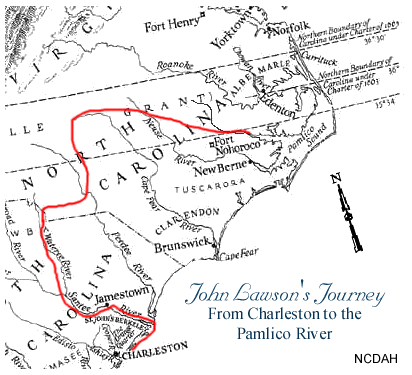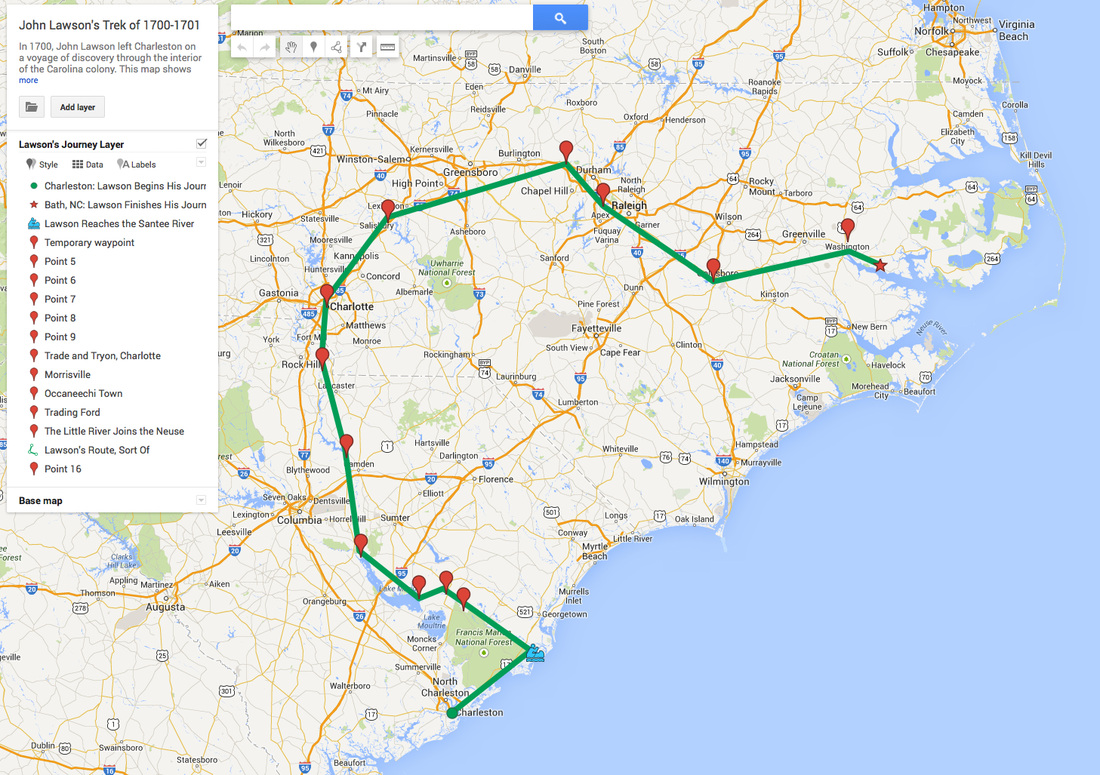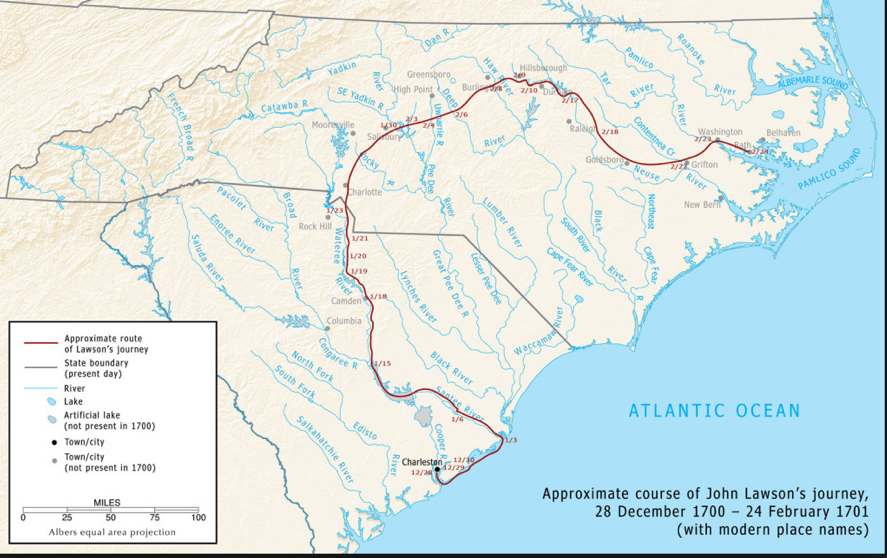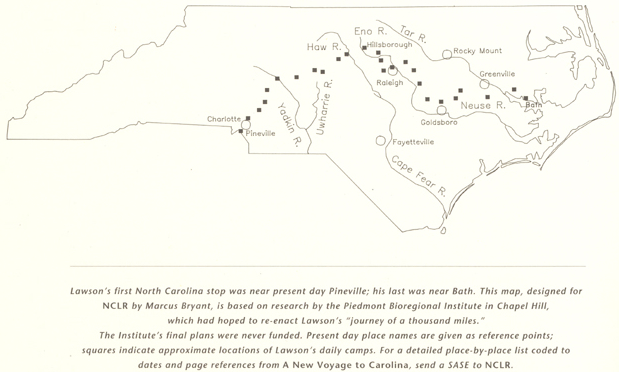"On December the 28th, 1700, I began my Voyage ... from Charles-Town ... we went down in a large Canoe, that we had provided for our Voyage thither...."

This one comes from the North Carolina Department of Archives and History and appears to have been made before the 1967 release of the edition of "A New Voyage to Carolina" edited by Hugh Lefler. More recent thinkers -- including my sources, like Val Green -- seem to uniformly disagree with the hard shuffle to the east at the site of modern Charlotte.
The map to the right comes from a 1992 story by the fine Marjorie Hudson in the very first issue of the North Carolina Literary Review. That Lawson was the subject of a special section in the first edition of that publication begins to inform you about his importance to colonial literature as well as to science, exploration, and history.
|
Lawson's Journey
John Lawson left Charleston on an ebb tide about 4 pm, Dec. 28, 1700. He paddled a dugout canoe along with five colonist friends and four Indians -- including one woman. They paddled along the coast until reaching a French settlement at the mouth of the Santee River, then headed upstream. Soon after they found the current tough going and got out, walking the rest of the two-month journey.
On the way he met and visited with many tribes of Native Americans. He waded through swamps, got falling down drunk, witnessed dances and medical practices, visited with traders, and kept a journal of what he saw, beginning a practice that would make him the most important observer of early colonial Carolina and his book, A New Voyage to Carolina, its most important document: scientifically, culturally, and historically. His journey took him only two months: from late December 1700 to late February 1701. But his descriptions -- from his journey and his years in the colony thereafter -- and the resulting book leave a legacy unparalleled in the history of the southeastern American colonies. Our Journey: Less Retracing than Honoring
On our first leg of this journey we did much as Lawson did, leaving Charleston harbor, though in a nice modern canoe. We left Charleston in mid-October. For the most recent blog entries about the trek and now the process of publishing a book and producing things like a poster and a museum exhibit based on Lawsons walk and mine, click here. We went piecemeal; Lawson didn't have Mini-Mites basketball games to coach and parent-teacher conferences to attend. He lived in his world; we live in ours.
Exactly where Lawson went remains a subject of considerable debate, given Lawson's occasional slovenliness and common exaggeration (he subtitles his book "A Journal of a Thousand Miles," and it turns out to have been around 550 at most, so exact physical accuracy wasn't his biggest thing -- something of a detriment if you're a surveyor). The map at the top of the page represents the best guesses I was able to put together as I interviewed people who have spent their lives thinking about Lawson and his journey. More important, though, this journey was not a slavish retracing of Lawson's specific footsteps. Certainly we did all we could to make sure we're going the right ways, and comparing then versus now is a vital part of this undertaking. More important, though, is that on this journey tried to do exactly as Lawson did: open our eyes to what is out there. Describe what we see. Chronicle our journey -- who and what we encountered, where we went, what we found. Lawson went through country new to him but familiar to those who lived there. So did we: so it always is with journeys, and with science, and with observation. It will surely change as time goes on. Other maps from other sources are below. |


